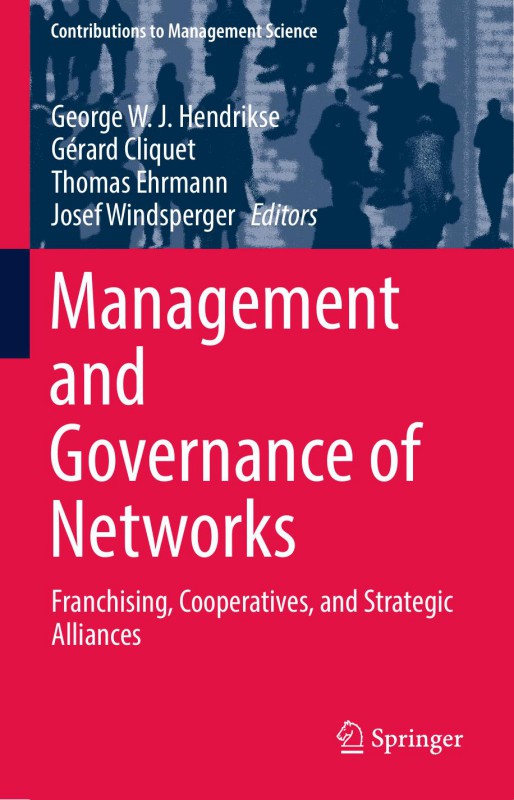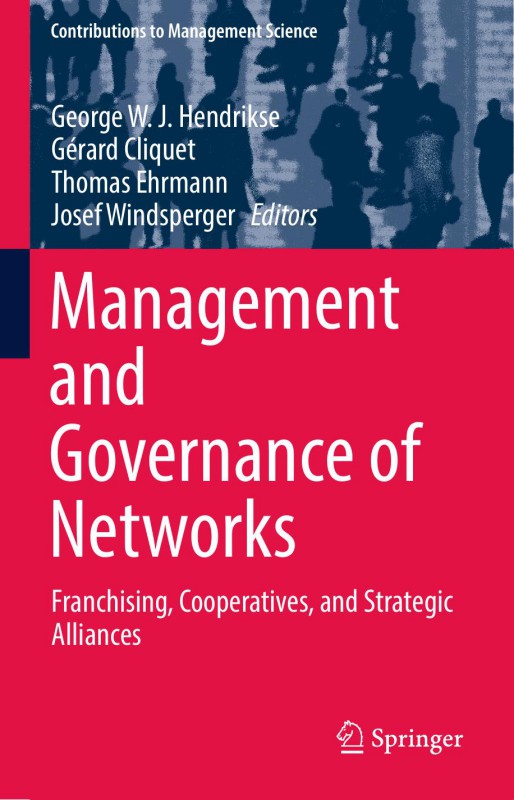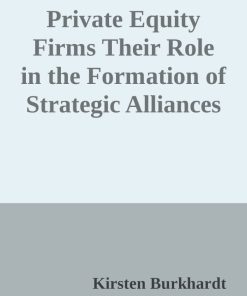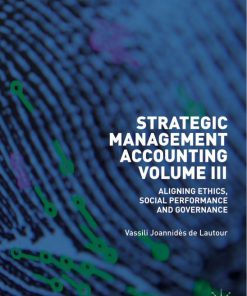Management and Governance of Networks Franchising Cooperatives and Strategic Alliances 1st Edition by George Hendrikse, Gérard Cliquet, Thomas Ehrmann, Josef Windsperger 331957275X 9783319572758
$50.00 Original price was: $50.00.$25.00Current price is: $25.00.
Authors:Management; Governance of Networks Franchising, Cooperatives; Strategi , Author sort:Management & Governance of Networks Franchising, Cooperatives & Strategi , Published:Published:May 2017
Management and Governance of Networks Franchising Cooperatives and Strategic Alliances 1st Edition by George Hendrikse, Gérard Cliquet, Thomas Ehrmann, Josef Windsperger – Ebook PDF Instant Download/Delivery. 331957275X, 9783319572758
Full download Management and Governance of Networks Franchising Cooperatives and Strategic Alliances 1st Edition after payment

Product details:
ISBN 10: 331957275X
ISBN 13: 9783319572758
Author: George W. J. Hendrikse, Gérard Cliquet, Thomas Ehrmann, Josef Windsperger
This book highlights cutting-edge research in the economics and management of networks as an interdisciplinary field, offering new theoretical, empirical and practical perspectives on the management, governance, ownership and control of cooperatives, franchising networks and strategic alliances. Further, it presents a strategic group perspective on franchisers and discusses both social entrepreneurship issues in franchising and franchising strategies for Indigenous entrepreneurship in Australia. Lastly, it offers a dynamic capabilities approach to alliance portfolio management and analyses the antecedents of the transitions taking place in the lifecycles of alliances.
Management and Governance of Networks Franchising Cooperatives and Strategic Alliances 1st Table of contents:
1 Franchising
2 Cooperatives
3 Strategic Alliances
References
Part I: Franchising
Strategic Groups in the French Franchising Sector
1 Introduction
2 Background Literature on Strategic Groups
2.1 Strategic Groups and Franchising
2.2 Main Results in the Franchise Literature
3 Data Collection and Study Variables
4 Multidimensional Static Analysis
4.1 Hierarchical Clustering Analysis
4.2 Robustness Checks and Stability of the Clusters
5 Strategic Groups and Performance Outcomes
6 Conclusion and Directions for Further Research
Appendix 1: Principal Component Analysis
Appendix 2: Predictive Modeling
References
Control and Performance in Franchising Networks
1 Introduction
2 Franchisor Performance, Intangible Resources, and Environmental Uncertainty
2.1 Resource-Based Perspective
2.2 Transaction Cost Economic Perspective
3 The Moderating Role of Control
3.1 Interaction Between Control and Intangible Resources
3.2 Interaction Between Control and Environmental Uncertainty
4 Empirical Analysis
4.1 Data Collection
4.2 Measures
5 Regression Analysis
6 Discussion and Implications
6.1 Discussion
6.2 Implications
6.3 Limitations and Future Research Directions
7 Conclusions
Appendix: Measures of the Variables
References
Beyond Main Street: Franchising Strategies for Indigenous Entrepreneurship in Australia
1 Introduction
2 The Indigenous Business Challenge
2.1 Indigenous Australia
2.2 Indigenous Disadvantage
2.3 Indigenous Business
3 A Franchising Strategy for Indigenous Entrepreneurship
4 Facilitating Indigenous Entrepreneurship Through Conventional and Nonconventional Franchising
5 A Variegated Cooperative Model
6 Conclusion
References
Social Entrepreneurship and Franchising: A Panacea for Emerging Countries? The Case of Algeria
1 Introduction
2 Social Entrepreneurship: Solving Social Issues with Market-Based Solutions
3 Franchising: A Choice Method of Scaling the Impacts of Social Entrepreneurship
4 Social Franchising: Driving Social Initiatives to Large-Scale Development
5 An Emblematic Case Study, Algeria: A Rich Country with a Poor Population
6 Conclusions
References
Franchising in the Education Sector: How Do Pakistani Customers Perceive This New Phenomenon?
1 Introduction
2 Literature Review
2.1 Customer Perceptions Regarding Franchising
2.2 Franchising in Emerging Markets
2.3 Franchising in the Education Sector
3 Franchising in Pakistan
3.1 Commercial Franchising in Pakistan
3.2 Nontraditional Franchising in Pakistan
3.3 Franchising in the Education Sector in Pakistan
4 Research Methodology
5 Findings
5.1 Customer Perceptions Regarding Franchising in the Education Sector
5.1.1 Customer Perceptions Regarding Franchised Schools Versus Public Schools
5.2 Customer Perceptions Regarding the Main Characteristics of Franchising in the Education Sector
5.2.1 Customer Perceptions Regarding the Brand Names of Franchised Chains
5.2.2 Customer Perceptions Regarding Quality in Franchised Schools
5.2.3 Customer Perceptions Regarding Prices in Franchised Schools
5.3 Customer Perceptions Regarding the Social Achievements of Franchising in the Education Sector
5.3.1 Customer Perceptions Regarding the Benefits of Franchising for Society
5.3.2 Customer Perceptions Regarding Benefits for Students in Rural Areas (Above All Girls)
5.3.3 Customer Perceptions Regarding Benefits for Employment
5.4 Customer Perceptions Regarding Opportunities and Challenges for Franchised Chains
5.4.1 Customer Perceptions Regarding Opportunities for Franchised Chains
5.4.2 Customer Perceptions Regarding Issues Faced by and Drawbacks of Franchised Chains
6 Discussion
6.1 Summary of Findings
6.2 Contributions to Research
6.3 Contributions to Practice
6.4 Limitations and Tracks for Future Research
References
Part II: Cooperatives
Profiling the Natural Food Cooperative Members: Strategic Implications in Terms of Market Positionin
1 Introduction
2 Theoretical Backgrounds
2.1 Food Cooperatives
2.2 Organic Versus Local
2.3 Trade-Off Between Ideology and Pragmatism
2.4 What Are the Motivations to Become a Member?
3 Methodology
3.1 Measurements
3.2 Sample Description
4 Statistical Analysis
5 Discussion
6 Conclusion
Appendix: Additional Constructs
References
Farmer Cooperatives as Systems of Attributes: An Analysis of Ownership and Investment Complementarit
1 Introduction
2 Hybrid Modes of Organization
3 Hybrid Systems of Attributes
4 Cooperative Modes of Organization: A Claim Rights Approach
5 A Richer Conceptualization of Claim Right Configurations
5.1 Membership Access
5.2 Equity Redemption Date
5.3 Ownership Transferability
5.4 Preferred Stock Provision and Ownership
5.5 Upfront Capital Contribution
6 Hybrid Systems of Attributes: Ownership and Investment Complementarity
7 Summary and Conclusion
References
Toward an Updated Typology of US Farmer Cooperatives: Survey Evidence of Recent Hybrid Ownership Res
1 Introduction
2 Observed Hybrid Arrangements
3 Data
4 Summary Statistics
4.1 Competitive Scope
4.2 Organizational Type
4.3 Organizational Size and Design
5 Testing Typologies
6 Novel Structures
7 Structure and Firm and Finance Characteristics
8 Summary and Conclusion
References
Innovations in Cooperatively Organized Breeding Networks: Analysis of Cluster Structures in Dairy Ca
1 Introduction
2 Goals and Tasks of Breeding Associations
3 Cooperatives and Innovation Activity
4 Methodology and Data
4.1 Measurement
4.2 Descriptive Statistics
5 Analysis and Results
6 Conclusion and Outlook
Appendix 1
1.1 Factor Analysis
KMO- and Bartlett-Test
Rotated Component Matrix
1.2 Discriminant Analysis for Cluster Solution 1
Wilks´ Lambda
Standardized Canonical Discriminant Function Coefficients
1.3 Discriminant Analysis for Cluster Solution 2
Wilks´ Lambda
Standardized Canonical Discriminant Function Coefficients
References
Uniformity in Collective Entrepreneurship: The Case of Food Retail Cooperatives in France
1 Introduction
2 Theoretical Framework
2.1 From a Horizontal/Heterarchical Organization to Vertical/Hierarchical Influences
2.2 The Dual Nature of Retail Cooperative Members
2.3 Need for Synergies
3 Methodology and Data
4 Findings
4.1 The Contracts Process
4.2 The Incentive Process
4.3 The Persuasion Process
4.4 The Trust Process
4.5 The Organizational Commitment Process
4.6 The Informal Control Process
4.7 The Solidarity Process
4.8 The Mimetic Process
4.9 The Enculturation Process
5 Discussion
6 Summary of Findings
7 Theoretical Implications
8 Practical Implications
9 Limitations and Future Research
Appendix: Interviewers´ Details
References
Characterizing Cooperatives in China
1 Introduction
2 Some Statistics and Five Cases Regarding Cooperatives in China
3 Evaluation
3.1 ICA Principles
3.2 Member-Owned, Member-Controlled, and Member-Benefitted
4 Aspects of the Political and Economic Environment Facing Cooperatives
4.1 Farmland System
4.2 Cooperative Law
4.3 Local and Central Governments
4.4 Educational Level of Farmers
4.5 Need for Capital
5 Conclusion
References
Cooperatives in Kyrgyzstan: Findings from a Survey of Cooperatives and Users
1 Introduction
2 Western Classification of Cooperatives
3 Data Sources on Agricultural Cooperatives in Kyrgyzstan
4 Functional Typology of Cooperatives Surveyed
5 Service Activities of the Cooperatives
6 Taxation and Financial Performance of Cooperatives
7 Farmers´ Attitudes Toward Cooperation
8 Effect of Cooperation on Farmers´ Well-Being
9 Conclusions
References
Part III: Strategic Alliances
Alliance Portfolio Management: A Model Based on Dynamic Capabilities
1 Introduction
2 The Basis of Alliance Portfolio Management
2.1 The Alliance Portfolio: A Concept Requiring Specification
2.2 The Benefits of the Dynamic Capabilities Model
2.3 Determining Factors and Stakes of Alliance Portfolio Management
3 Proposition of an Emerging Model for the Management of an Alliance Portfolio, based on Dynamic Cap
3.1 The Creation of Dynamic Capabilities: Source of Optimization of the Alliance Portfolio Managemen
3.1.1 The Development of Business Intelligence Capabilities
3.1.2 The Development of Networking Capabilities
3.1.3 The Development of Alliance Management Capabilities
3.1.4 The Development of Absorptive Capabilities
3.2 A Dedicated Structure as Catalyst for the Alliance Portfolio Management Capabilities
3.3 The Portfolio Management Capabilities: Source of a Competitive Advantage
4 Conclusion
References
The Antecedents of Relationship Phase Affect in Alliances
1 Introduction
2 The Business Relationship Life Cycle Theory
3 BRLC as a Behavioral Construct
4 The Theoretical Model
4.1 (Business) Relationship Life Cycle Theory
4.1.1 Relationship Phase Affect
4.2 Relational Exchange Theory (RET)
4.2.1 Relational Governance
4.2.2 Relationship Quality
4.2.3 Interorganizational Commitment
4.3 Transaction Cost Economics (TCE)
4.3.1 Relational Investments
4.3.2 Behavioral Uncertainty
4.4 (Network) Bargaining Power Model
4.4.1 Bargaining Influence
4.5 Organizational Control Model
4.5.1 Perceived Control
5 Conclusion
References
Food Safety Management Through the Lens of Hybrids: The Case of Fresh Fruit and Vegetable Shippers
1 Introduction
2 Analytical Framework of the Hybrid Forms
3 The Specific Pesticide Safety Management Model
3.1 Nature and Sources of the Safety Transaction Costs
3.2 Governance Structures and Mechanisms
3.3 A Tentative Model for Safety Management in the Fresh Produce Sector
4 Empirical Test of the Relationship Between Decision Rights and Strategic Resources: The Case of To
4.1 Presentation of the Case Studies and Sampling
4.2 Data Collection and Quality of the Data
4.3 Measurement of the Dependent Variables
4.4 Measurement of the Independent Variables
4.5 Analysis
4.6 Findings
5 Discussion and Implications
5.1 Discussion
5.2 Contribution to Theory
5.3 Managerial Implications
5.4 Limitations
6 Conclusions and Perspectives
Appendix 1
Results of the French case study
Results of the French case study in more details
Appendix 2
Results of the Chilean case study
MRL management characteristics of clusters 1 and 2
Results of the Chilean case study
Main structural and management characteristics of clusters 1 and 2
People also search for Management and Governance of Networks Franchising Cooperatives and Strategic Alliances 1st:
management and network services
managing networks
governance networks
network governance pdf
You may also like…
eBook PDF
Strategic Management for Public Governance in Europe 1st Edition by Anne Drumaux, Paul Joyce
eBook PDF
Research Methodology and Scientific Writing 2nd Edition by George Thomas 3030648648 9783030648640












